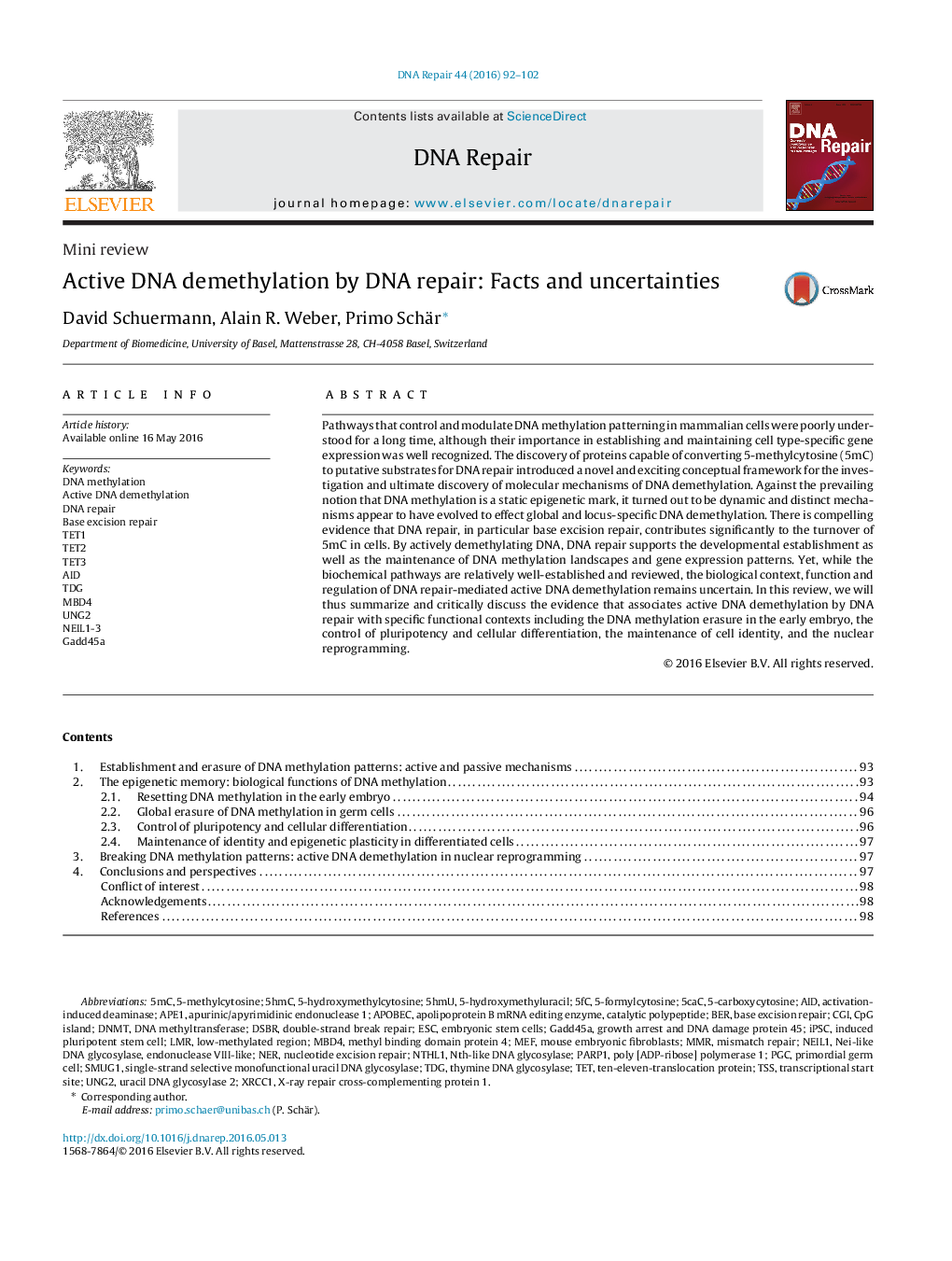| Article ID | Journal | Published Year | Pages | File Type |
|---|---|---|---|---|
| 8320483 | DNA Repair | 2016 | 11 Pages |
Abstract
Pathways that control and modulate DNA methylation patterning in mammalian cells were poorly understood for a long time, although their importance in establishing and maintaining cell type-specific gene expression was well recognized. The discovery of proteins capable of converting 5-methylcytosine (5mC) to putative substrates for DNA repair introduced a novel and exciting conceptual framework for the investigation and ultimate discovery of molecular mechanisms of DNA demethylation. Against the prevailing notion that DNA methylation is a static epigenetic mark, it turned out to be dynamic and distinct mechanisms appear to have evolved to effect global and locus-specific DNA demethylation. There is compelling evidence that DNA repair, in particular base excision repair, contributes significantly to the turnover of 5mC in cells. By actively demethylating DNA, DNA repair supports the developmental establishment as well as the maintenance of DNA methylation landscapes and gene expression patterns. Yet, while the biochemical pathways are relatively well-established and reviewed, the biological context, function and regulation of DNA repair-mediated active DNA demethylation remains uncertain. In this review, we will thus summarize and critically discuss the evidence that associates active DNA demethylation by DNA repair with specific functional contexts including the DNA methylation erasure in the early embryo, the control of pluripotency and cellular differentiation, the maintenance of cell identity, and the nuclear reprogramming.
Keywords
TDGGADD45A5caCPARP1DSBRAPE1PGCTET2APOBECXRCC1NEIL1poly [ADP-ribose] polymerase 1Active DNA demethylation5hmUMBD4SMUG1UNG2X-Ray Repair Cross-Complementing Protein 15fC5-carboxycytosineTET3TET1TSSMEFTETBERIPSCLMRCGIMMR5hmCDnmt5mC5-Hydroxymethyluracil5-formylcytosine5-Methylcytosine5-hydroxymethylcytosineapurinic/apyrimidinic endonuclease 1Thymine DNA glycosylaseDNA methyltransferaseNERDNA repairDouble-strand break repairnucleotide excision repairmismatch repairbase excision repairCpG islandESCTranscriptional start sitePrimordial germ cellInduced pluripotent stem cellEmbryonic stem cellsActivation-induced deaminaseDNA methylationmouse embryonic fibroblastsAID
Related Topics
Life Sciences
Biochemistry, Genetics and Molecular Biology
Biochemistry
Authors
David Schuermann, Alain R. Weber, Primo Schär,
